
Ben’s decision to join the military affects his entire family members, including his brother, who has autism and who announces that he, too, wishes to enlist.
Somebody, Please Tell Me Who I Am

In this narrative history of autism, you’ll learn the story of parents fighting for their children ’s civil rights; of doctors struggling to define autism; of ingenuity, self-advocacy, and profound social change. In a Different Key takes us on a journey from an era when families were shamed and children were condemned to institutions to one in which a cadre of people with autism push not simply for inclusion, but for a new understanding of autism: as difference rather than disability.
In a Different Key

The teacher asks her students what a compound word is. They know that it is two little words put together to make a new word. Now their homework is to come up with more. Where the children find compound words, throughout the day and all around, is presented in cartoon art in panels to illuminate meaning.
Word Play

What’s in a book? For one bespectacled mouse, this book is dull, dull, dull. That is, until the mouse meets a “Word-Eating, Flying Whale” that brings a “Glow-in-the-Dark Kung Fu Worm” into the picture. Dry wit and outrageous scenes remind readers of the pleasure in a tall tale told (or read!).
This Book Will Not Be Fun

The narrator and his friend Tyler will soon start 2nd grade. Will his new teacher and the more advanced grade be as bad as the boys’ older sister warn? Happily, the younger siblings catch on to the teasing when they acknowledge that they are no longer as gullible as first graders! The funny narration is accompanied by jaunty, expressive ink and wash illustrations.
Second Grade Holdout
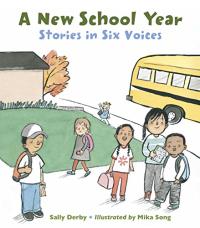
Six children, one in each grade from kindergarten to 5th, share their thoughts and anxieties as the new school year starts. Short, sensitive poems combine with lightly colored illustrations to introduce each individual. The voices and concerns of the children from diverse backgrounds are both relatable and plausible.
A New School Year: Stories in Six Voices

In school, Little Plane practices his writing but he finds the loopity loops really tough. He doesn’t give up though and continues to try — until at last, he completes his words! Children will see themselves in the tenacious, child-like airplane with expressive eyes. Brightly colored, digitally created illustrations add to the simple text.
Little Plane Learns to Write

Getting your teacher ready for school means starting out with a big smile, then being able to show her how to find iguana books during library time and reminding her where the bathroom is if she doesn’t know. The gentle humor in this turnaround tale is sure to remind children of typical school routines and that everyone may have worries.
How to Get Your Teacher Ready
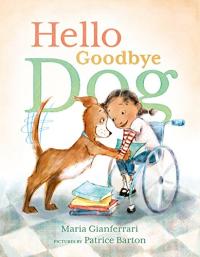
Zara’s dog, Moose, loves hellos but not goodbyes. In spite of all efforts, he continues to follow Zara to school until the day Moose graduates from Therapy School. Now every day is a “hello” as Moose accompanies Zara, to her delight and that of her classmates. Soft lines and gentle colors depict the faithful pet and his loyal girl.
Hello Goodbye Dog
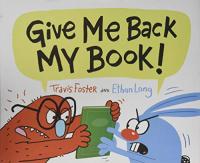
Bloo and Redd (blue and red critters) argue over a green book. When a bookworm takes it, the pair collaborates to make a book with the same named parts (including letters that gather together to form words). Conversation bubbles humorously placed on white space above the characters complement the comic illustrations — all the way to a satisfying conclusion.
Give Me Back My Book

Time to get up, get dressed, brush teeth, and more, all in preparation to open the door and go! Young children will recognize the broad forms of everyday clothing and objects as they feel their varied textures. The sturdy format holds up to rough little hands as they touch and look and begin the day.
Getting Ready
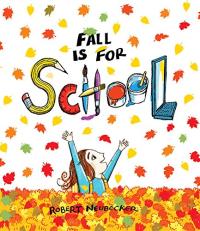
As seasons change, fall becomes time for school. In a rhyming text a girl reminds her reluctant brother of all the fun and learning that it will bring. From history to mystery, arithmetic to astronomy, the pair heads to school.Swirling, bolding colored illustrations fill the pages with autumn images and what the children will see and study.
Fall Is for School

The world of Islam is intrduced by describing its colors and traditions in simple rhymes. From a red prayer rug to a blue hijab, everyday colors are given special meaning as young readers learn about clothing, food, and other important elements of Islamic culture, with a young Muslim girl as a guide. Terms introduced are explained in greater detail in the book’s end.
Golden Domes and Silver Lanterns: A Muslim Book of Colors

A young mouse’s bed is used to launch an imaginative trip to exotic places with a bit of this and a dash of that shared by the grownup rodent. Simple, colorful illustrations depict the silly adventures that culminate with a kiss goodnight.
This & That
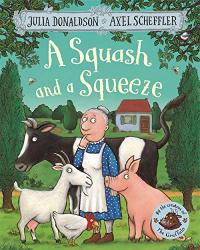
A little old lady complains to a wise old man that her house is “a squash and a squeeze.” She follows his advice is to bring her hen, pig, goat, and cow into her cozy abode with chaotic results. When the animals leave, however, the house becomes incredibly spacious! Humor abounds in rhyme and comic illustrations in this fresh take on an old tale.
A Squash and a Squeeze
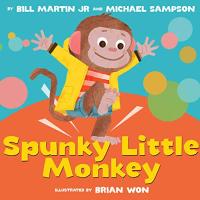
When a concerned Mama calls the doctor about her sleepy little monkey, the doctor prescribed rhythmic movement from head to toe! Rhyming, rhythmic language describe lively activities demonstrated by a colorful little monkey who claps, stomps, shakes, and more in this engaging, playful jaunt.
Spunky Little Monkey
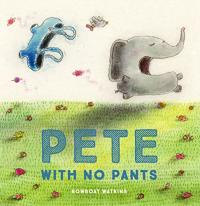
Pete is a small, gray elephant with a big imagination who likes knock-knock jokes. Leaving his pants on a nearby tree, he becomes a boulder, then attempts to be a squirrel … until his pants-bearing mother takes him home until the next day. Textured, lightly colored illustrations and tiny written asides make this a relatable but comical adventure.
Pete With No Pants
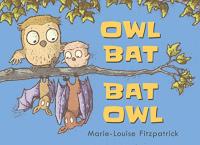
An owl with three babies sleeps atop a branch when and three young bats with their grownup latch on the bottom. Simple lines convey the concern of both families, until a wind storm brings them together. Expressive illustrations are used to develop the drama and wit in this appealing wordless tale.
Owl Bat Bat Owl

When does eavesdropping become espionage? When it’s being done by Olivia the pig, of course! Olivia misinterprets what she overhears her parents discussing providing readers with another engaging, humorous romp. Signature illustrations capture Olivia’s antics and expressions.
Olivia the Spy
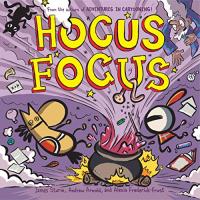
The impatient young knight is tired of peeling the wizard’s turnips even if they are crucial to the magical mixture. When the wizard is away, the knight decides to create her first enchanted potion but accidentally turns the horse, Edward, into a ravenous, monstrous worm! The comic book format moves the wacky saga along to its equally silly conclusion.
Hocus Focus

Young inventor, Frank Einstein and his friend Watson along with his walking, talking robots Klink and Klank, are back. This time, Frank has invented the ‘evoblaster’ which allows the user to evolve into other forms and then back again. Real science combines with laugh-out-loud humor in the latest installment.
Frank Einstein and the EvoBlaster Belt

The narrator describes a very different visit to the museum after the class returns to school. Were the Neanderthals really alive; did he truly rearrange the dinosaur; could it all have been a figment of his imagination? Energetic illustrations and understated narration create the comedy in this truly unique and highly inventive adventure.
A Funny Thing Happened at the Museum …
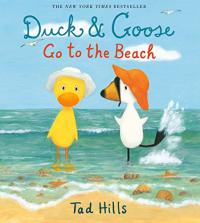
Duck is inspired to take a trip as he and Goose relax in their beautiful meadow. The duo walks to a beach where they meet the locals, explore tide pools, and build a sandcastle before returning home. The feathered friends’ simple adventure exudes gentle humor and warmth in text and illustration.
Duck & Goose Go to the Beach

This book uses photographs of students engaging in a variety of real-life social situations. The realistic format plays to the visual strengths of children with ASD to teach appropriate social behaviors. Color photographs illustrate the “right way” and “wrong way” to approach each situation and the positive/negative consequences of each. A facilitator (parent, teacher, etc.) is initially needed to explain each situation, and ask questions such as “What is happening in this picture?” Children role-play skills until confident enough to practice them in real-life interactions.
